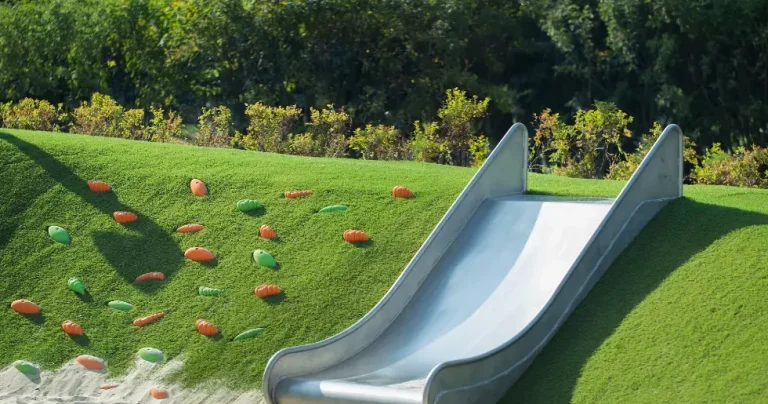Contents
1. Reduced Maintenance and Care Requirements
One of the primary benefits of artificial grass in urban areas is its low maintenance. Unlike natural grass, which requires watering, fertilizing, mowing, and regular care, artificial grass requires little to no maintenance and always retains its neat, beautiful appearance. This feature is especially beneficial in urban spaces where time and resources for maintaining green spaces are limited.
2. Water Conservation
In cities and dry regions, excessive water consumption is a significant challenge. The use of artificial grass in urban spaces, especially in parks, squares, and street sides, can substantially reduce water usage. This can be especially helpful in times of water scarcity, conserving valuable water resources.
3. Consistent Appearance and Durability
Artificial grass maintains its vibrant green look and natural appearance throughout the year, even during dry seasons or without rainfall. This feature ensures that public urban spaces remain beautiful and welcoming, providing green areas all year long.
4. High Durability Against Traffic and Pressure
In urban spaces with high foot traffic, natural grass can quickly become worn, leading to brown patches and damaged areas. However, artificial grass is highly resistant to constant pressure and frequent use. Therefore, it is ideal for locations like parks, squares, and street sidewalks where people walk regularly.
5. Weather Resistance
Artificial grass is specially designed to withstand various weather conditions. Rain, snow, heat, and cold do not affect its appearance or functionality. This makes artificial grass perfect for areas with drastic weather changes or in places where maintaining natural grass is not feasible during different seasons.
6. Reduction in Noise Pollution and Environmental Improvement
Artificial grass helps to reduce noise pollution. In urban areas where noise and environmental pollution are common, synthetic grass can act as a natural sound barrier, contributing to better quality of life. This feature is particularly important in commercial areas or around busy roads and streets.
7. Fire and Damage Resistance
Artificial grass is fire-resistant and does not get damaged easily. This feature is especially useful in regions where the risk of fire is high, such as dry or desert-like areas. Additionally, artificial grass is resistant to damage caused by animals, pests, and plant diseases, which sets it apart from natural grass.
8. Versatility in Urban Design
Artificial grass has a wide range of applications in urban design. From parks and public green spaces to sports fields, street sides, and even urban green roofs, synthetic grass can be implemented in various parts of the urban environment. Furthermore, artificial grass can act as a replacement for natural grass in urban spaces for various purposes, including beautification, reducing maintenance costs, and improving urban environmental quality.
Conclusion
Artificial grass offers a sustainable and cost-effective solution for maintaining the beauty and functionality of urban green spaces. With its benefits such as low maintenance, weather resistance, water conservation, and high durability, artificial grass is the ideal choice for modern urban design.


